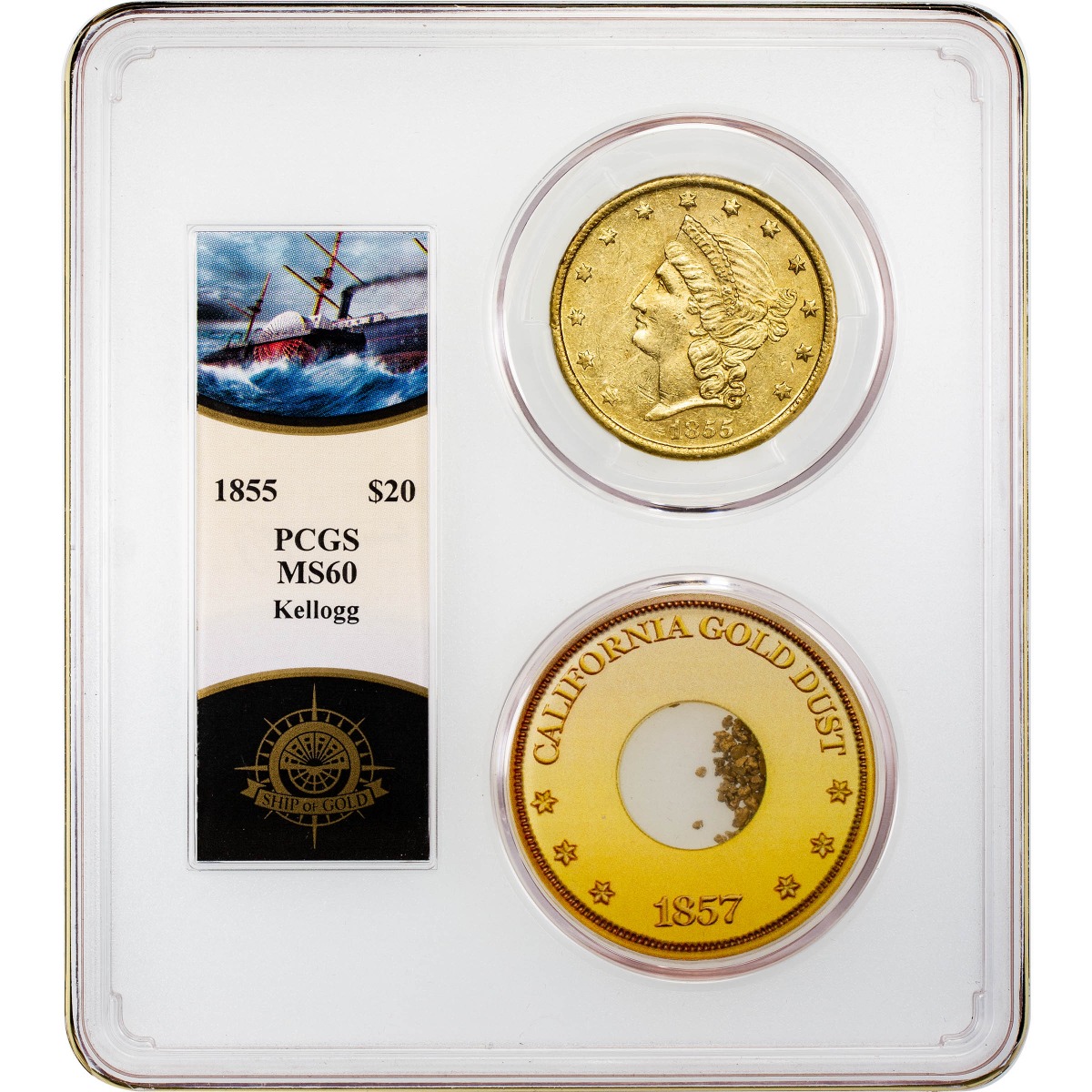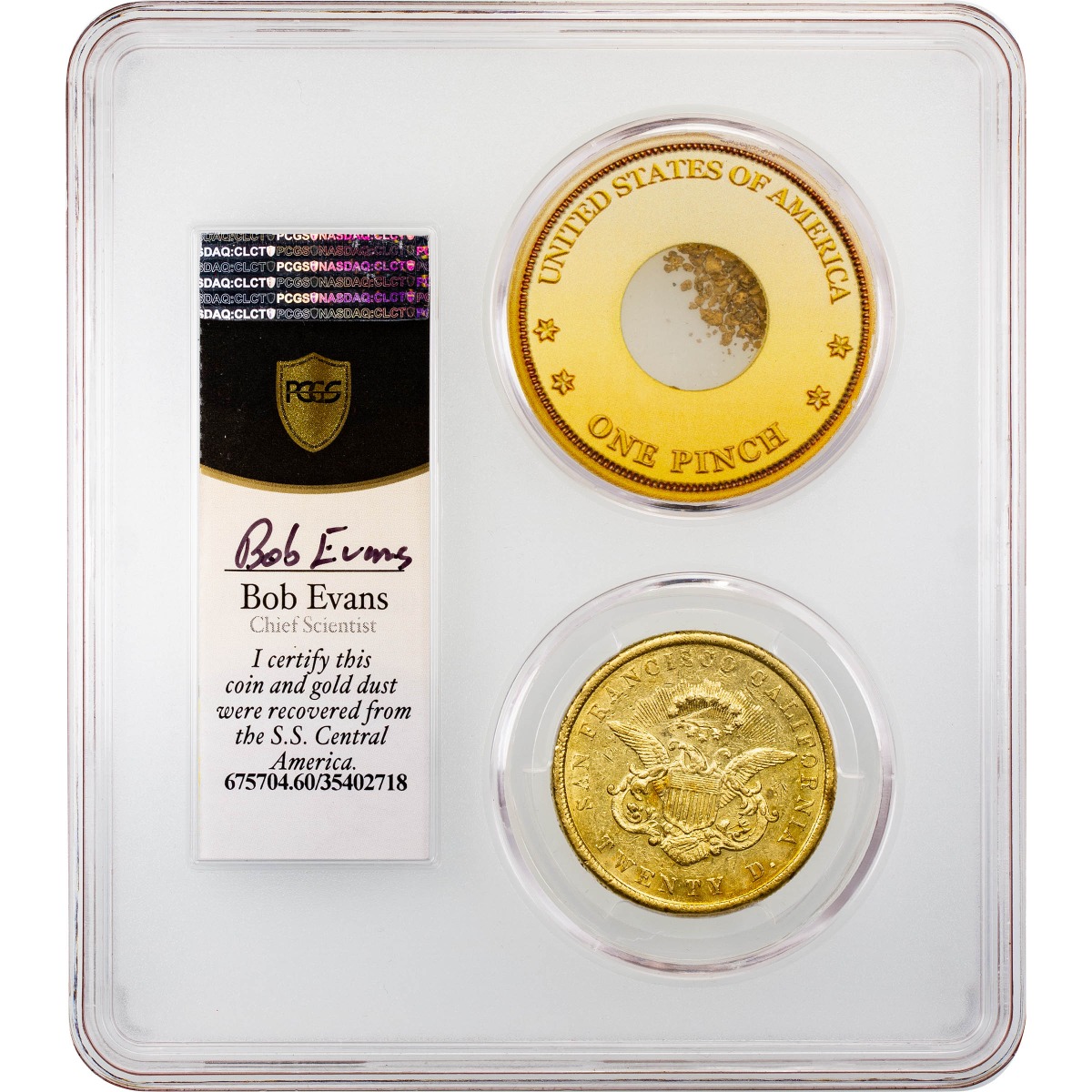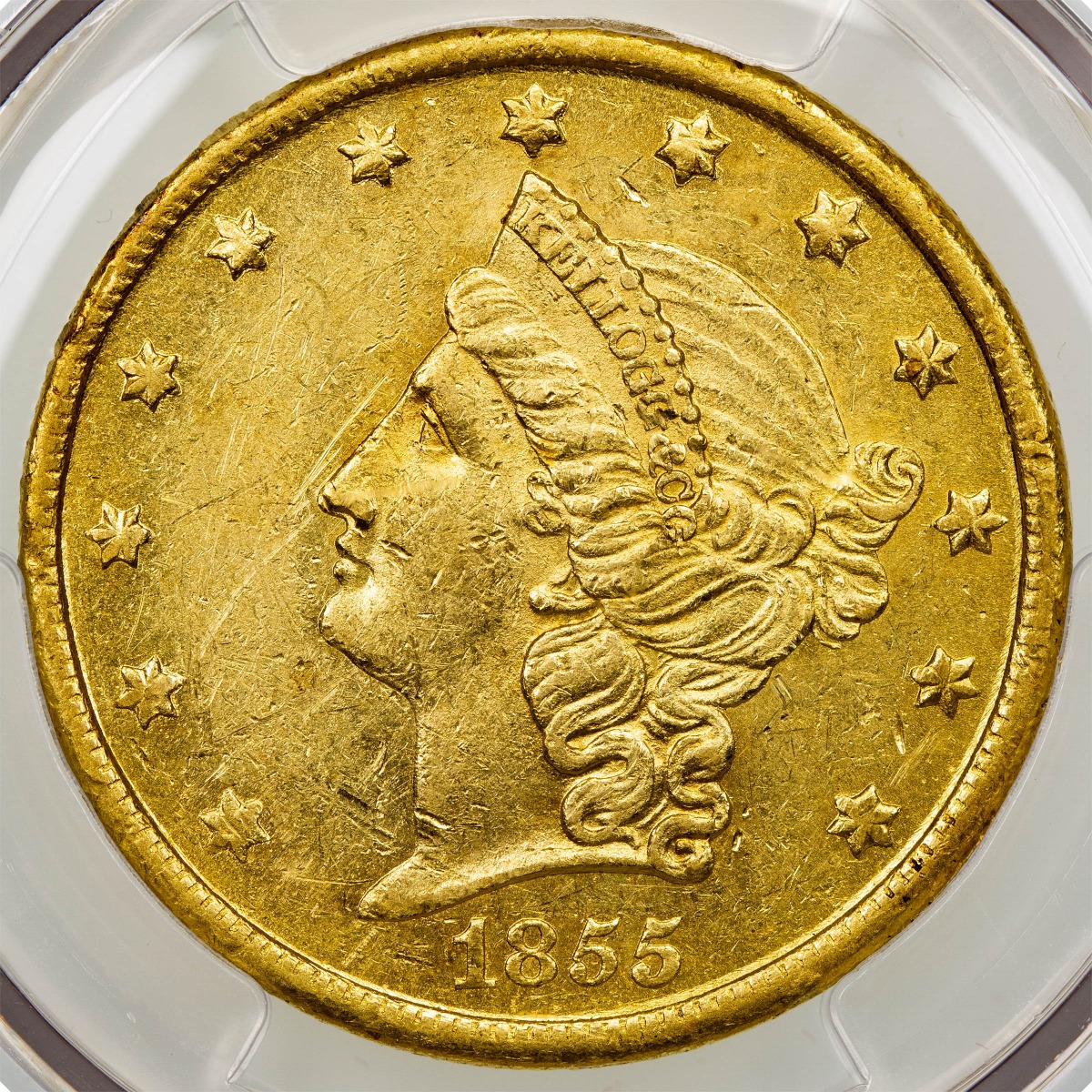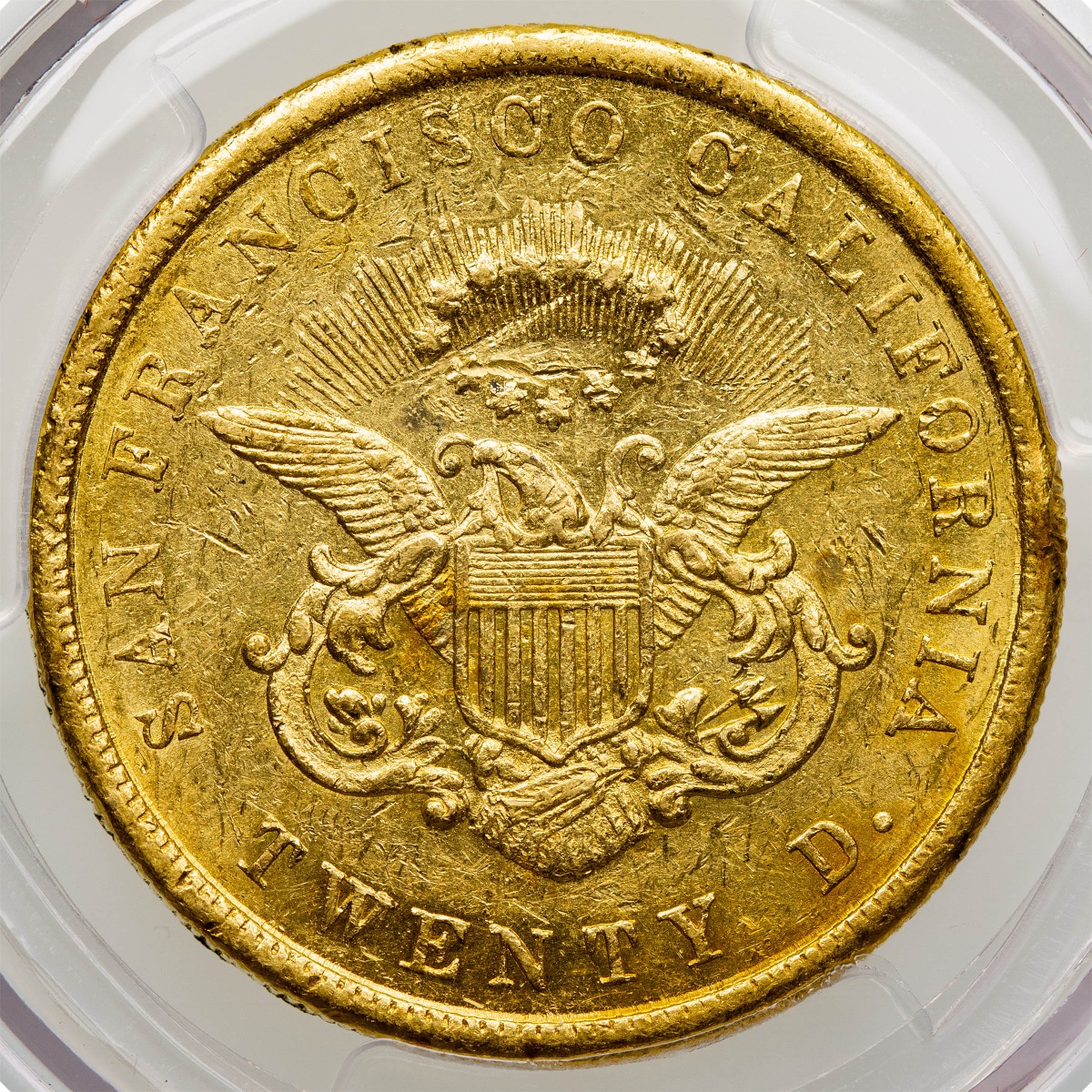Coin Corner: SSCA Kellogg & Co Liberty Head Gold Double Eagle MS60
The booming influx of gold that was brought into the economy during the California Gold Rush was unfathomable. In fact, the sheer quantity of gold coming in triggered Congress to authorize a new branch mint in San Francisco during 1852. It would not be until two years later, in 1854, that the San Francisco Mint would open for operation. During this period of time, there was a massive coin shortage occurring on the west coast. As a result, many private assaying offices and mints began sprouting around California.
One of the most famous entrepreneurs related to the gold of the California Gold Rush was John Glover Kellogg, who arrived in San Francisco on October 12, 1849. By 1854, the company Kellogg & Richter had formed and was receiving urgent requests from banks across northern California to begin minting private coins.
On February 9, 1854, Kellogg & Richter began supplying twenty-dollar gold coins at the rate of about 1,000 coins per day. The coins struck by Kellogg & Richter bore a striking resemblance to the Liberty Head Gold Double Eagle. The obverse of these Kellogg Double Eagles depicts the same image of Lady Liberty as the official Double Eagle, however, her coronet reads “KELLOGG & CO” instead of “LIBERTY.” Similarly, the reverse of the Kellogg coins are nearly identical to the official Double Eagles aside from the inscription of “SAN FRANCISCO CALIFORNIA,” which takes the place of “UNITED STATES OF AMERICA.” Many people speculate that Albert Kuner, the designer of the California State Seal, cut these dies for Kellogg & Richter.
The San Francisco Mint finally opened on April 3, 1854, but its ability to produce coins could not come anywhere close to meeting the demand of gold coinage. Often, the new branch Mint would be forced to completely halt production due to shortages of materials. As a result, Kellogg & Richter began striking more coins than ever before as their coinage became practically universally accepted.
By 1855, the partnership between Kellogg and Richter had dissolved, but Kellogg continued to produce gold coinage as Kellogg & Company. Some estimates suggest that over 50% of the gold coins supplied at this time were provided by Kellogg & Company. Although it is not known for a fact, many believe that Kellogg & Company stopped producing coinage at the end of 1855 when the San Francisco Mint was in full operation. This means that Kellogg & Company coins were only produced for a grand total of two years.
In the following years, a vast majority of these Kellogg & Company coins were melted down and re-struck by the San Francisco Mint. In turn, Kellogg Gold Double Eagles have become some of the rarest coins of early America. This specific example was minted in 1855, found aboard the shipwreck of the SS Central America, and graded Mint State 60 by PCGS. In total, only 23 examples of the 1855 Kellogg Liberty Head Gold Double Eagle were found in the wreckage SS Central America. Of those examples, this is the only one that has been graded Mint State 60 with only one example grading higher at Mint State 61.










